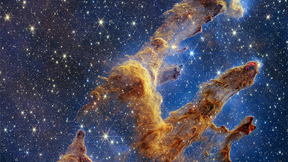- Additive manufacturing
- Advanced membranes
- American Physical Society
- ASC
- Astrophysics
- Atmospheric, Earth, and Energy
- Batteries
- Battery materials
- Bay Area Science Festival
- Biofuels sfa
- Biological Accelerator Mass Spectrometry
- Biosciences and Biotechnology
- Biosecurity
- Biosecurity & Bioscience
- Biosecurity and Bioforensics Group
- Biosecurity sfa
- Capacitive deionization
- Carbon nanotubes
- Carbonate materials
- Center for Accelerator Mass Spectrometry
- Center for Applied Scientific Computing
- Center for High Energy Density Science
- Charity
- Community
- Community gift program
- Computing & Simulation
- Counterterrorism
- COVID-19
- Ct vaccine center
- DARPA
- Data Science
- Data Science Institute
- Defense and Deterrence
- Discovery Center
- DOE
- Earth system science
- Education
- Emergency
- Energetic Materials Center
- Energy flow charts
- EOS and Materials Theory Group
- Expanding Your Horizons
- Forensic Science Center
- Fun with science
- Fundamental Science
- Fusion
- Gemini Planet Imager
- Glenn T. Seaborg Institute
- HEAF
- High Energy Density Science
- HOME Campaign
- HPC
- HPC Innovation Center
- HPC4Mfg
- Hydrogen production
- Hydrogen storage
- IEEE
- Inclusion
- Inertial confinement fusion
- Intelligence
- Internships
- Jupiter Laser Facility
- Laboratory for Energy Applications for the Future
- Laser Materials
- Lasers
- Lasers and Optical Science Technology
- Livermore Center for Quantum Science
- Livermore Computing
- Livermore Valley Open Campus
- Livermorium
- LLMDA
- LLNS
- Machine learning
- Materials Science
- Microbiology and Immunology Group
- Nanocrystal solar cells
- Nanoscience
- NanoSIMS
- National Ignition Facility
- Neural devices
- Neutrinos
- Newsline
- nEXO
- NNSA
- Nonproliferation
- npneq
- Nuclear
- Nuclear and Chemical Sciences
- Nuclear and Particle Physics Group
- Nuclear Chemical and Isotopic Science
- Nuclear forensics
- NuSTAR
- Office of Science
- Outreach
- Oxidation and degradation
- pcmdi
- People
- Periodic table
- Physics
- Planetary Defense
- Postdocs
- Procurement
- Quantum Simulations Group
- Rare-earth elements
- Rubin Observatory
- Science
- Science and Technology Review
- Science on Saturday
- Sequestration
- Soil microbiome sfa
- Solar
- Solar system
- Solid-state batteries
- Space
- Space Science Institute
- STEM
- Stockpile stewardship
- Students
- Summer Student Spotlight
- Supercapacitors
- Supercomputer
- Supercomputing
- Surface analysis
- Sustainability
- Technology Transfer
- Tours
- Transport system
- Traumatic brain injury
- User Facility
- Veterans
- Viruses
- Water
- Water research
- Weapons
- Women in STEM
- Women's Hall of Fame
- WWW Research Landing Page
- X-ray
Back
Lasers and Optical Science Technology
Magnesium oxide undergoes dynamic transition when it comes to super-Earth exoplanets
Researchers from Lawrence Livermore National Laboratory (LLNL) and Johns Hopkins University have unlocked new secrets about the interiors of super-Earth exoplanets, potentially revolutionizing our understanding of these distant worlds. The focus of this work, magnesium oxide (MgO), a crucial component of Earth’s lower mantle, is believed to play a similar role in the…
Jupiter Laser Facility gets a reboot
Fifty years ago, the first laser, Janus, was installed in Building 174 (renamed the Jupiter Laser Facility in 2006) at Lawrence Livermore National Laboratory. Additional lasers, more than 100 Ph.D.s granted time on the system and thousands of international users later, the Jupiter Laser Facility (JLF) celebrated its grand reopening Thursday after a four-year refurbishment,…
Using NIF to study the sluggish pace of star formation
Editor’s note: The principal mission of Lawrence Livermore National Laboratory (LLNL)’s National Ignition Facility (NIF) is to support the National Nuclear Security Administration’s science-based Stockpile Stewardship Program — and with the achievement of fusion ignition in 2022 at NIF, LLNL is further exploring the possible use of nuclear fusion as a future energy source…








